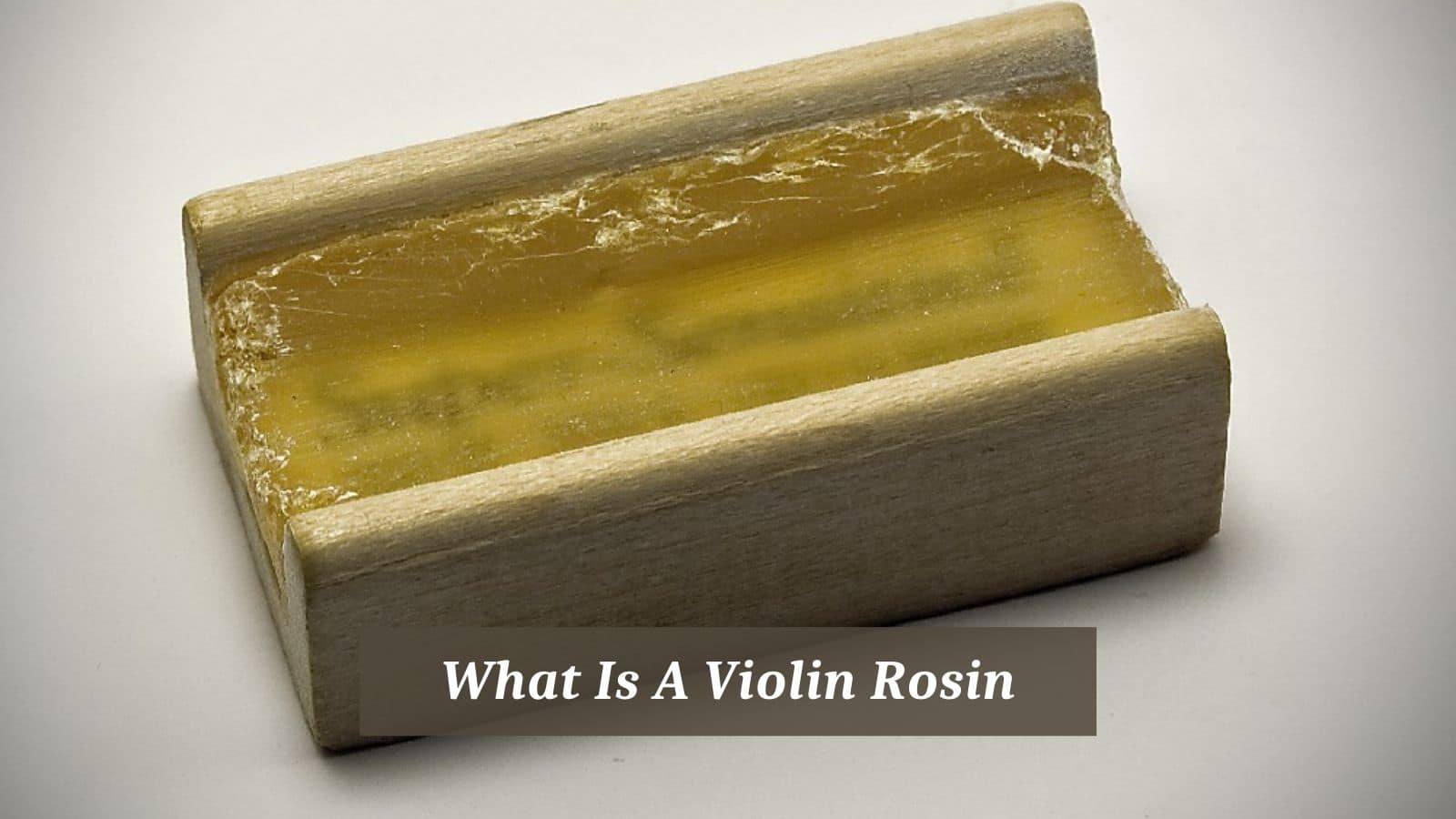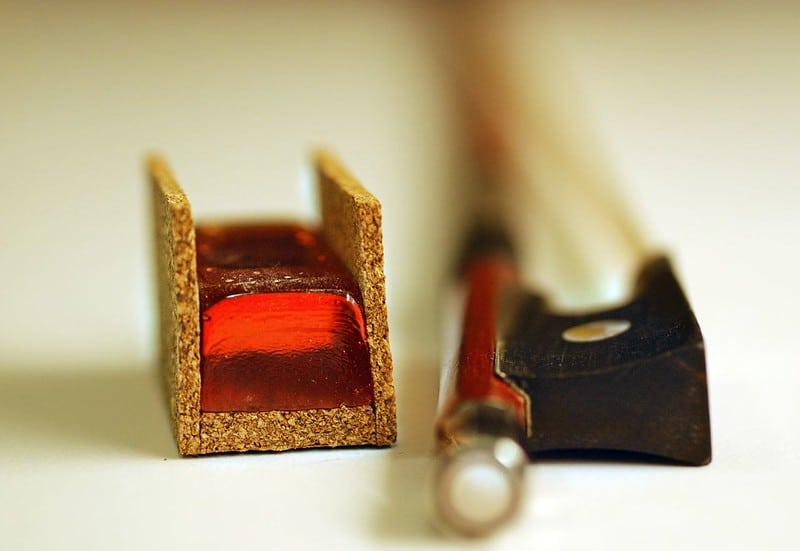
The violin is considered by many to be one of the most beautiful and captivating instruments ever made. It is entirely handcrafted and, in order to be played, the violinist uses a bow to produce the most beautiful sound possible when in contact with the strings.
However, the melancholic sound of the violin could not be produced without a very special ingredient: the rosin.
What Is A Violin Rosin
The rosin is a small piece of cake, similar to a small amber-colored stone, made of natural resins. Without the rosin, absolutely no sound can be produced.
How is the rosin made?
The name “rosin” is just a variant of the word “resin,” which is the main ingredient used in its production. These resins are usually extracted from many types of pine trees that can be found all over the world.
Upon choosing the right trees, the rosin maker makes a small notch in each tree, from which the resin starts to flow slowly within a day. This is just the beginning of the process.
Once the resin has been collected, it must be heated to become purer, and other ingredients must be added to enhance its qualities. There are many recipes and ingredients that can be added, such as beeswax or special types of metal. When the rosin is ready, it is usually packaged in a small box made out of wood or plastic.
Additives
Gold is a frequent ingredient and can be found in rosins produced by several makers. It produces a rich tone yet smooth and warm. Another common ingredient is silver, which adds dazzling brilliance to the sound.
The copper, in turn, can produce a very soft sound. The list of ingredients that can be added goes on.
However, some people may suffer from allergies caused by these additives because, when the rosin is applied to the bow, it can turn into a sticky, powdery white material that is partially inhaled by the player when playing the instrument.
Fortunately, there are some good options for players with allergies because they include no harmful additives at all.
How does it work?
When the rosin is applied in the bow—through a process of friction—it makes the hair feel less smooth, thus able to put the string into vibration, and producing the peculiar sound of the violin.
However, before the first use, the rosin has a completely smooth surface that is practically unable to adhere to the hair. It is advisable to sand the surface of the rosin a little bit to make it a bit more rough and stickier.
How to apply the rosin
In order to apply the rosin, the player must rub the bow hair against the rosin, mimicking the movements of playing the violin. When doing this, the hair must be very tight; otherwise, the bow stick may touch the rosin, causing it to break.
A back-and-forth “scrubbing” motion can be used to get rosin to really adhere to the hair of the bow. After applying it, the player must test the bow for a few seconds to make sure it has been well rosined throughout its length.
How much rosin should be applied?
There are various perspectives on this, but as a general rule, just enough rosin to produce a beautiful and full sound is necessary. Very often, beginners apply much less rosin than needed, and the resulting sound is somewhat dull and lacking some edge.
When not enough bow is applied, the bow will slip around on the string and produce a very soft sound (or even no sound at all). The player may also encounter rosin-less patches of the hair where the sound suddenly gets softer, even though the pressure is consistent.
Applying too much rosin to the bow is usually not a problem, but if the rosin is too sticky, the player may find it a bit more difficult to play soft passages while maintaining a smooth sound.
Also, excess of rosin generates a lot of dust that accumulates on the strings, on the fingerboard, and on the body of the violin, which, if not cleaned, can harm the instrument’s finish.
Rosin care
Like the violin, the rosin should always be stored in a safe place (or compartment of the violin case) at room temperature.
Rosin should be handled carefully because it can be broken very easily, disintegrating into smaller pieces or releasing tiny chips. Additionally, rosin may melt in excessively hot conditions, as when left inside a car or when exposed to direct sunlight.
Extra care should be taken when the rosin is being applied near the frog of the bow. If the player is not careful enough, the rosin can hit the ferrule and break. The player should always keep the thumb near the ferrule to avoid accidents.
How often should the rosin be replaced?
If well stored, a cake of rosin may last for years, but there are two main reasons why some players replace it in short periods of time.
The first reason is to try new types of rosin that may produce better results than the rosin that is currently being used.
The second reason is because some rosins work better in winter and perform worse in summer, and vice versa. If a player travels a lot, he may also buy extra rosin that can stand up to different climate conditions better.
Types of Rosin
As mentioned before, there are rosins that perform better in winter whereas others perform better in summer, according to their color. They often fall into two groups: light-colored rosins and dark-colored rosins.
Light rosins are better for hot and humid regions since they are firmer and less sticky. Dark rosins, in turn, perform better in dry or cool climates. Under hot conditions, dark rosins may become too sticky and produce an unwanted scratchy sound.
Conclusion
Rosin is an essential accessory in the life of the violinist. Without it, no sound could be produced. If you still have questions about rosins, don’t hesitate to contact a good teacher who will help you buy the rosin that best suits your needs.


